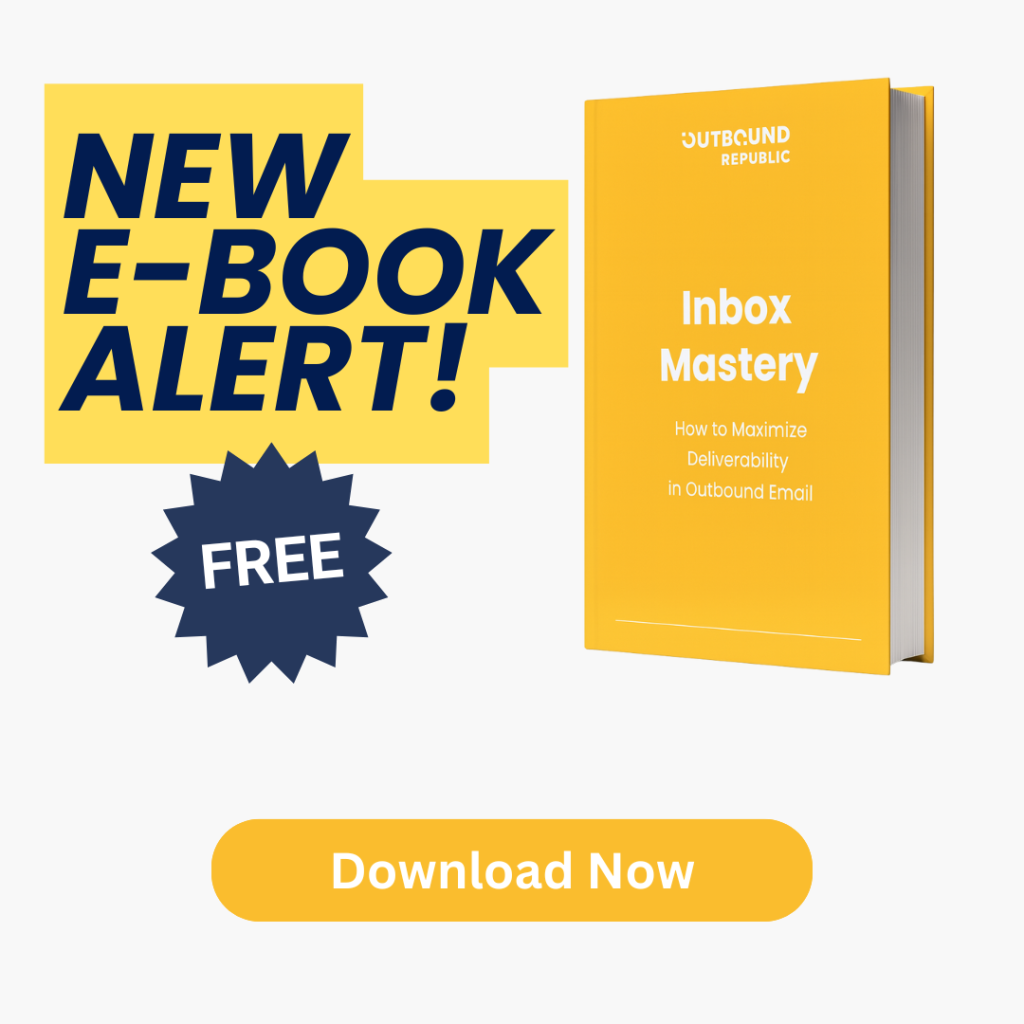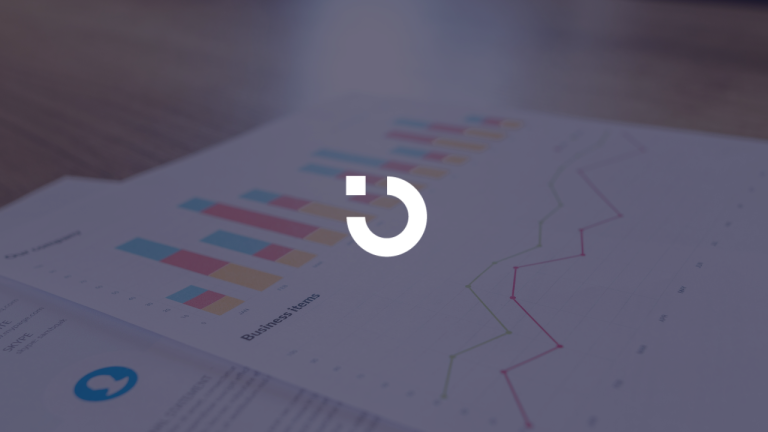If you’re a Sales Leader or CMO, you’ve probably asked yourself: Should we focus more on outbound or inbound? It’s a classic debate in B2B. Outbound promises control and speed, while inbound builds long-term trust and authority.
The truth? The strongest B2B lead gen strategies don’t choose one over the other. Instead, they balance outbound and inbound – creating a growth engine that delivers both predictable pipeline and compounding brand equity.
In this post, we’ll break down outbound vs inbound marketing, highlight their strengths and weaknesses, and show you how to blend them into a single growth framework.
Outbound Marketing: Control and Predictability
Outbound marketing is the proactive engine of growth. Instead of waiting for prospects to discover you, you take your offer directly to them. Think cold email, LinkedIn outreach, targeted ads, or even the good old-fashioned cold call. It’s not about hoping to be found. It’s about creating conversations on your own terms.
This makes outbound the go-to lever when companies need speed and control. With outbound, you can:
- Target with precision: Zero in on specific industries, company sizes, geographies, or job roles. Tools like LinkedIn Sales Navigator or Apollo give you the ability to build laser-focused prospect lists.
- Generate pipeline fast: Unlike inbound campaigns, which can take months to gain traction, outbound can put meetings on the calendar within days or weeks.
- Control the volume: If you need to double pipeline this quarter, you can increase outbound activity by adding SDR capacity or scaling outreach campaigns.
But it’s not without challenges. Outbound depends heavily on prospect data quality, email deliverability, and compliance with regulations like GDPR or CAN-SPAM. Sending more emails doesn’t guarantee more results — in fact, poor practices can burn your domain reputation and damage long-term ROI.
Still, when done strategically, outbound offers something inbound simply can’t match: predictability. You can forecast outreach volume, conversion rates, and meetings booked with far greater accuracy than you can with inbound. That’s why outbound remains a critical piece of any balanced B2B lead gen strategy.
Inbound Marketing: Trust and Long-Term Scale
If outbound is about control and speed, inbound is about building trust and creating momentum that compounds over time. Instead of knocking on your prospect’s door, you’re designing a path that attracts them to yours.
Inbound marketing covers everything from content and SEO, to webinars, podcasts, social proof, and demand generation campaigns. Done right, it positions your company as a trusted authority — the brand that prospects turn to when they’re actively searching for solutions.
Here’s why inbound is so powerful for a B2B lead gen strategy:
- Compounding ROI: Blog posts, case studies, and videos you publish today can keep generating traffic and leads for months (or even years).
- Trust Building: When prospects discover your brand through valuable content, they’re already warmed up by the time they reach out. You’re not a stranger; you’re a resource.
- Lower CAC Over Time: While inbound can be resource-heavy at the start, customer acquisition costs often decrease as content builds organic traction.
But inbound isn’t perfect. It’s a long game. You can’t spin up a blog and expect leads to roll in next week. It requires consistency, patience, and ongoing content production. You also have less control over who finds you; sometimes the traffic you attract isn’t aligned with your ideal customer profile.
That said, inbound delivers something outbound can’t: scale and trust at the brand level. Outbound might spark the first conversation, but inbound creates the reputation that closes deals and fuels sustainable growth.
Inbound, in many ways, is the engine that keeps your outbound team sharp, providing thought leadership, social proof, and content assets that make every outreach email more credible.
Outbound vs. Inbound: Key Differences That Matter
Marketers and sales leaders often frame the debate as outbound vs inbound marketing, but in reality, they serve different purposes within a B2B lead gen strategy. To understand how they complement each other, it helps to look at their core differences side by side.
Outbound is all about speed and control. You decide who to target, when to reach out, and how much pipeline to generate this quarter. Inbound, on the other hand, is about building authority and creating a steady flow of warm leads who come to you.
Here’s a breakdown:
| Factor | Outbound Marketing | Inbound Marketing |
|---|---|---|
| Speed to Pipeline | Fast – days or weeks to start conversations | Slow – months to build traction |
| Control | High – you pick the ICP, timing, and volume | Lower – you influence but don’t control who finds you |
| Cost Structure | Higher CAC upfront, immediate returns | Lower CAC over time, compounding ROI |
| Scalability | Limited by resources and deliverability | Grows as content and SEO compound |
| Buyer Experience | Can feel interruptive if generic, highly relevant if tailored | Value-first, builds long-term trust |
Outbound gives you predictability. Inbound gives you sustainability.
When you rely only on outbound, you risk hitting scaling limits and exhausting your team. When you rely only on inbound, you risk pipeline gaps while waiting for results to compound. The smartest teams build engines that integrate both, using outbound to generate momentum and inbound to maintain it.
Why You Shouldn’t Pick Just One Lead Gen Strategy
One of the most common mistakes in B2B go-to-market planning is treating outbound vs inbound marketing as an either/or decision. The reality? Choosing only one leaves your growth engine vulnerable.
If you go all-in on inbound, you’re betting on long-term compounding results but exposing yourself to short-term pipeline gaps. Content takes months to rank, SEO requires consistent investment, and demand gen campaigns need time to mature. Meanwhile, your sales team may be sitting idle waiting for leads to trickle in.
If you go all-in on outbound, you can drive meetings quickly, but you’ll eventually run into diminishing returns. SDR teams burn through prospect lists, inbox placement becomes harder to maintain, and your CAC can rise if outbound is your only growth lever. Worse, without the brand trust built by inbound, outbound conversations often take longer to convert.
The strongest B2B lead gen strategies don’t force a choice. Instead, they blend the two. Outbound drives the quick wins and immediate feedback loops, while inbound builds authority and sustains growth over time. When they work together, outbound insights sharpen inbound content, and inbound assets strengthen outbound credibility.
That’s the balance: outbound for acceleration, inbound for endurance.
Building a Balanced Growth Engine
So how do you actually balance outbound vs inbound marketing in a way that fuels predictable, scalable pipeline? The key is treating them as two parts of the same B2B lead gen strategy, not separate silos.
Here’s a practical framework:
1. Use outbound to generate speed and test ICPs. Outbound campaigns give you immediate feedback: which industries reply, which roles engage, and which pain points resonate. Within weeks, you’ll know if your ICP hypothesis holds up. That intelligence is gold for shaping inbound campaigns.
2. Feed outbound insights into inbound content. Every objection an SDR hears, every trend that emerges in prospect replies, can become a blog post, webinar, or case study. Outbound data shows you what your market cares about right now, inbound content amplifies those insights to a wider audience.
3. Arm outbound with inbound assets. Outbound emails become 10x stronger when they link to a thought leadership article, case study, or whitepaper. Inbound provides the social proof and authority that makes outbound feel less like a cold pitch and more like a warm introduction.
4. Balance resource allocation. Outbound gets you pipeline this quarter. Inbound ensures you won’t be scrambling for leads next year. A smart growth engine invests in both: SDR capacity and demand-gen content, deliverability tools and SEO tools, outreach tech and analytics.
5. Align metrics across teams. Instead of measuring outbound and inbound in isolation, track how they reinforce each other. Example: outbound conversations inform inbound topics; inbound leads convert faster when supported by outbound touches.
A balanced growth engine isn’t about splitting resources 50/50. It’s about using each channel for what it does best. Outbound accelerates, inbound sustains, and together they build a pipeline that’s both predictable and scalable.
Conclusion: Outbound and Inbound Are Better Together
The debate around outbound vs inbound marketing often misses the point. It’s not a competition, it’s a partnership. Outbound gives you control, speed, and the ability to test new markets. Inbound gives you trust, scale, and a compounding advantage that grows stronger over time.
The smartest companies don’t pick one. They design a B2B lead gen strategy where outbound and inbound fuel each other – outbound sparks conversations today, and inbound ensures those conversations turn into long-term growth.
When you balance both sides of the engine, you get the best of both worlds: predictable pipeline now and sustainable demand tomorrow.
If you’re ready to align outbound precision with inbound trust, let’s talk. Contact us and we’ll help you design a growth strategy that drives short-term results and long-term scalability.





